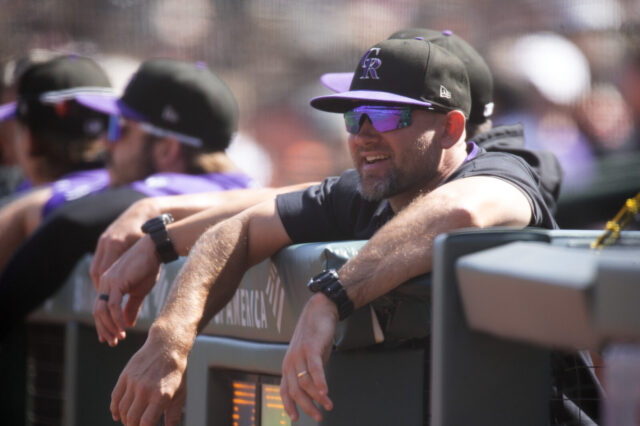This story originally appeared in Mile High Sports Magazine. Read the full digital edition.
***EDITOR’S NOTE: This story appeared in the January 2016 issue of Mile High Sports Magazine. Often called “Skier’s Thumb” or “Gamekeeper’s Thumb,” a torn or sprained ulnar collateral ligament is the same injury Rockies rookie shortstop Trevor Story sustained on July 30, 2016 leading to potential season-ending surgery.***
Anatomy of the Athlete: Skier’s Thumb
Presented by CU Sports Medicine
The crisp breeze surrounds you. Your helmet cuts through the mountain hair with precision and speed. The bumps beneath you are absorbed by knees, ankles and hips, almost as if they didn’t exist.
And then it happens.
The sky spins. Skis fly. That spoonful of ice cold snow somehow finds its way down the back of your trousers. You’ve crashed.
As you gather yourself – head attached to neck…check; right leg…works; left leg…works; lungs…breathe; face…still pretty – you realize the grim reaper has been avoided once again.
But a few more runs, perhaps a trip to the bottom chased by some apres ski, and something is throbbing. You first notice it when picking up that frosty mug wasn’t as easy as the last time – it’s your thumb. And you’re not alone, certainly not the first. “Skier’s Thumb” is as common in Colorado skiers as a skinned knee in youth football.
What Just Happened?
While knee injuries are certainly the “most feared” amongst skiers, it’s the 5th and 10th digits that more regularly get hurt. The thumb, believe it or not, is oddly exposed when it comes to skiing. It’s a two-part equation: First, many skiers use mittens, which automatically isolate the thumb from its four friends; and even if a more traditional glove is worn, the skier tries to hold onto a poll, which can sometimes act as a dangerous “lever.” Second, using one’s hands to stop a fall is a natural instinct. Given those two factors combined, the thumb is regularly exposed to danger in any given crash. When the skier falls, then tries to brace himself on the way down – either by hitting the ground or using the poll as a brace – the thumb becomes the victim.
What’s Hurt?
In short, you’ve just injured your ulnar collateral ligament, which can be located on the radial side of the wrist, and the ulnar side of the thumb. It’s a key ligament, as it provides strength and stability to the thumb. When it becomes hurt, the most common symptom, along with pain and swelling, is the loss of strength, stability and functionality of the thumb; gripping every day items, particular in a “pinching” motion, becomes challenging and painful. Most often, a fall while skiing creates a situation for hyperextension or hyperabducting, which ultimately sprains or tears the ulnar collateral joint.
Treatment
While a trip to the mid-mountain tavern for a cold brew or a hot toddy might temporarily ease the pain, skier’s thumb is an injury that needs both examination and treatment. It’s important for a doctor to determine whether the tear is full or partial. If the tear is partial, rest, ice and rehab are the typically prescribed remedies. If the tear is complete, surgery is likely required. Proper healing is key, as the biggest risk is the longterm lengthening of the UCL, which can cause permanent instability in the joint (this is sometimes called “Gamekeeper’s Thumb”).
Disturbing Statistic: 10%
Skier’s Thumb accounts for 10 percent of all skiing injuries.
Source: abc-of-skiing.com
***
Anatomy of the Athlete is presented by the physicians at CU Sports Medicine
The CU Sports Medicine team provides cutting-edge care for a full spectrum of activity-related injuries. Whether you’re a competitive or recreational athlete, CU Sports Medicine specializes in results-oriented programs to get you back in the game. Contact CU Sports Medicine at either of their convenient locations:
Denver
2000 South Colorado Boulevard
Colorado Center Tower One
720.848.8200
Boulder
311 Mapleton Avenue
303.441.2219



